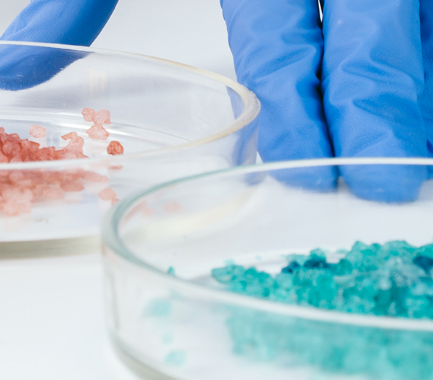Your contact
PENPET-Team - Hamburg

Tim Meister
Sales
Tel. +49 (0) 40 - 675 7 99 40
sales@penpet.de
Get in touch with us.
Ethyl 3-ethoxypropionate (EEP)
Ethyl 3-ethoxypropionate (EEP) is an organic compound that belongs to both the carboxylic acid esters and the ethers and is mainly used in industry as a solvent. The substance has a strong electrical resistance and thus reduces the conductivity of paints, varnishes and coatings. Its low surface tension helps materials cure with a smoother appearance and fewer imperfections. Due to its low toxicity and high temperature resistance, ethyl 3-ethoxypropionate is also suitable for sensitive areas of application. The compound is used as a solvent in wood processing, in furniture manufacture, in the manufacture of building materials, in the automotive sector and in plastics processing, among other things. In addition, ethyl 3-ethoxypropionate serves as a starting material for the synthesis of other substances.
At PENPET you get ethyl 3-ethoxypropionate (EEP) of the highest quality - from a reliable partner who will also meet your requirements in the long term. We look forward to receiving your inquiry for an individual offer. Prompt delivery of the liquid compound can be made in packages with different weights.
CAS no. 763-69-9
EINECS no. 212-112-9
Molecular formula: C7H14O3
Synonyms: EEP, 3-Ethoxypropionic acid ethyl ester, Ethyl-3-ethoxypropionate, Ethyl beta-ethoxypropionate
Areas of application: Solvent, raw material for chemical synthesis
More Information
Ethyl 3-ethoxypropionate (EEP) is a chemical compound with two functional groups. The molecules of the substance consist of a residue of propionic acid which has been esterified with a molecule of ethylene glycol and is connected to an ethoxy group at its terminal carbon atom.
Under normal conditions, ethyl 3-ethoxypropionate (EEP) is a colorless, non-volatile liquid. The compound has a high temperature resistance. It only solidifies when it cools below -50 °C and remains liquid until it reaches its boiling point of 165 °C. Ethyl 3-ethoxypropionate has a slight, ester-like odor.
The substance can only be dissolved in water to a limited extent and, due to its lower density, settles floating on top of the water. In contrast, ethyl 3-ethoxypropionate is very soluble in many organic solvents.
When stored as directed, ethyl 3-ethoxypropionate (EEP) is chemically stable. However, the compound forms explosive peroxides in air. Contact with strong oxidizing agents, strong acids and metals can lead to violent and dangerous reactions. Reactions of the substance with alkali metals and alkali hydrides release highly flammable and explosive hydrogen.
The compound is flammable. Ethyl 3-ethoxypropionate vapors can form flammable and explosive vapor-air mixtures in ambient air. In addition, because they are heavier than air, these vapors can spread unnoticed along the ground, potentially causing remote ignition of the substance. It is therefore essential to keep ethyl 3-ethoxypropionate away from potential ignition sources such as sparks, open flames, heated surfaces and devices as well as electrostatic discharges. Burning or thermal decomposition of the compound produces irritating and noxious gases such as carbon dioxide and carbon monoxide.
Ethyl 3-ethoxypropionate (EEP) is an irritant hazardous substance that can cause redness, painful irritation, degreasing and dermatitis on the skin. Affected body parts should be washed thoroughly with water and soap. After contact with the eyes of the compound or its vapors and aerosols, unpleasant irritation, increased lacrimation and, with repeated exposure, conjunctivitis may occur. The eye should be rinsed immediately under running water and then examined by an ophthalmologist.
Inhalation of concentrated aerosols or vapors of ethyl 3-ethoxypropionate may cause respiratory irritation. Swallowing the compound can also cause painful irritation of the mucous membranes. Gastrointestinal symptoms such as nausea, feeling of sickness and stomach pain can also occur. Tolerance studies in animals suggest that the absorption of the compound into the metabolism can cause central nervous system disorders such as dizziness, weakness, lethargy and cognitive difficulties as well as disturbances in liver function.
Ethyl 3-ethoxypropionate is very toxic to aquatic life. With regard to possible damage to the ecosystem, the connection was rated as slightly hazardous to water. It must not enter water bodies, waste water or the ground. The escape of larger quantities into the environment must be reported to the local authorities. As a flammable hazardous substance, ethyl 3-ethoxypropionate is also subject to special transport regulations.
